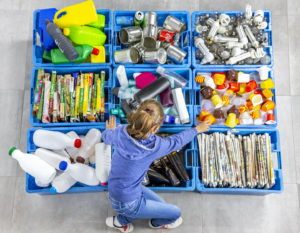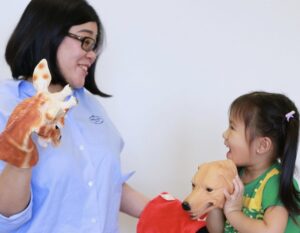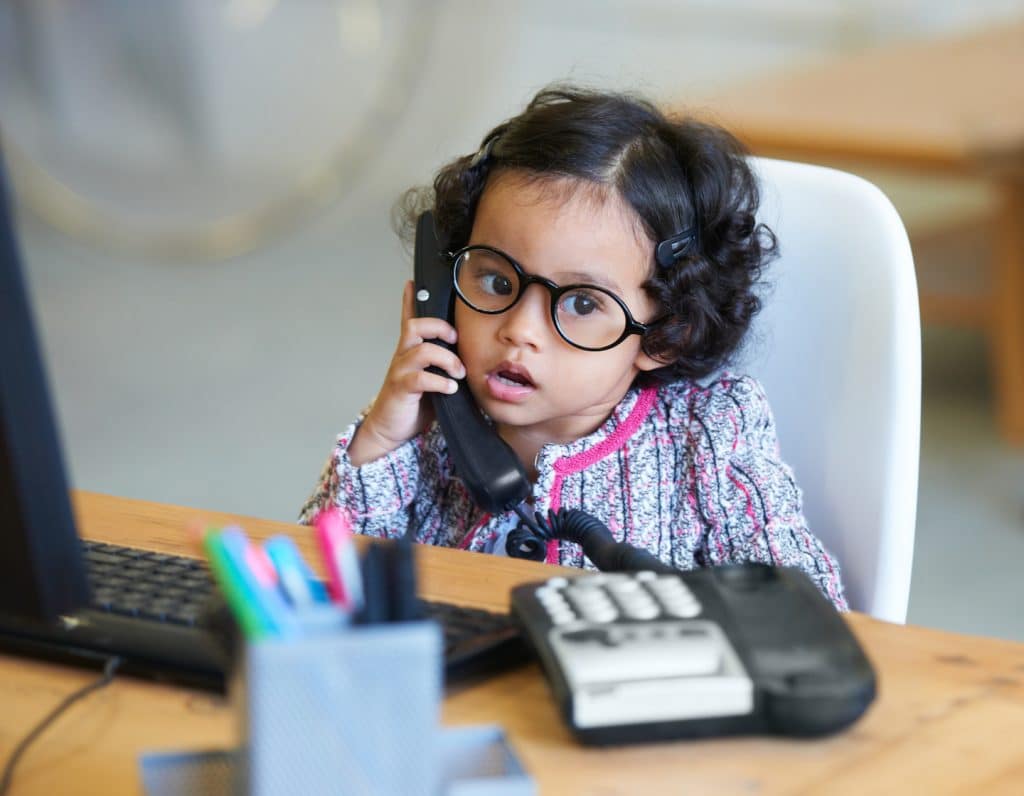
 Post Category - ParentingParenting - Post Category - Toddler & PreschoolerToddler & Preschooler
Post Category - ParentingParenting - Post Category - Toddler & PreschoolerToddler & PreschoolerIt turns out talking to themselves is a major move toward independence for children, and can help with problem solving and self-regulation. Here’s how to support them (and what parents can say)!
Please welcome child development expert Dr. Aletheia Lee of Chapter Zero Singapore, with a fascinating four-part series on age 4 and the science behind your child’s emerging sense of independence. Baffled by your child’s recent behaviour? Here’s how to make sense of it!
Click here to read Parts 1 and 2
Another feature of growing independence in children is the use of language to communicate with the self for self-regulation. As social beings, we humans use language to tell others how we feel, what we want, what we think, what we’re going to do (intention), what we don’t want the children to do (inhibition).
When parents, caregivers, and educators talk to infants and toddlers from early on, they naturally expose children to the system of language and culture — how to go about life. Social exchanges with 1-to-2-year-olds involve collaborations: the adult and child coordinate actions toward a shared goal. As children get older and tasks become more elaborate – e.g. from simple feeding to setting the table for a meal – adults use dialogues to scaffold children’s participation in the activity. They prompt steps, ask leading questions, give feedback, and clarify what the goal is. Consider the following exchange:
Adult: “It’s time to have dinner! Let’s get the table ready. First we’ll lay the placemats. Where do we keep them?”
Child: “Dinner time! Placemats… over here.” [Goes to side table to fetch them]
Adult: ”It’s you and me and papa tonight. Didi has already eaten his dinner. How many placemats should we lay out? We need one for you, one for me, and one for papa.” [Pointing to seats at the table]
Child: “One, two, three.” [Puts placemats on the table]
Adult: “Great, what do we put on the placemat?
Child: “Spoon.”
Adult: “Where do we place the spoon?”
Child: “Here, and here, and here.” [Places the spoons]
Adult: “Mm-hmm. One spoon for you, one for me, one for papa. What comes next?”
Child: “Fork. Here, and here and here. “ [Places the forks]
Adult: “Yes. Now we’re ready for the food. Here it comes!”
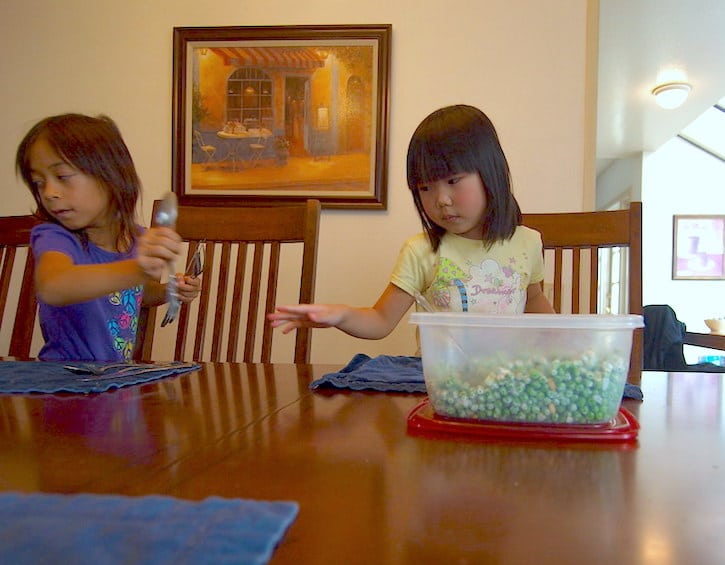
Lev Vygotsky1 believed that social dialogues like the one above have an invaluable effect on children’s mental functioning. He related these back-and-forth exchanges to the way young children talk out loud to themselves as they engage in activities. Vygotsky proposed that children hone cognitive capabilities by transferring interpersonal exchanges inward, first as private speech (talking to themselves), and later on as inner speech (thinking to themselves), to monitor and regulate their own behaviour. Studies2 have found that private speech gradually emerges and peaks at age 4, then declines in primary school as overt self-talk shifts to whispering, muttering, lip movements, and finally silent talk.
On the road to independence, 4-year-olds regularly utilise private speech to guide themselves during tasks or structure situations when they play. Self-talk may take different beneficial forms:
Asking and answering, “they have any more dogs in there? …there”;
Self-monitoring, “and I’ll throw the fish food, then eat the fish food”;
Self-guiding, “just go straight”, “move it a bit more”;
Self-structuring, “here’s the paper to draw, oh! I gotta get my pencils”;
Self-planning, “first I’m gonna start with this one, then the blue one”;
Self-challenging, “ok now let’s build a bigger one”;
Self-reinforcing, “first time! so fun!”, “I did it!”;
Self-regulating (focus of attention), “red goes right…here. now black”;
Self-controlling, “no no, don’t touch that one”;
Self-correcting, “no, that’s not the way. it’s this side”;
Self-motivating, “come on, let’s get it”;
Self-comforting (during frustration), “uhh…this one is hard.”
Observing the patterns of self-directed talk incorporated into their autonomous activities, one appreciates how children gradually take over the adult’s scaffolding role. The internalisation of speech helps children handle more responsibilities and achieve higher levels of competence.
For curious readers, you can watch private speech in action on Singapore’s version of Old Enough! — a special series for On the Red Dot — featuring 3-to-5-year-old children as they venture out on their own to run errands for their parents. As the show’s senior producer Poh Kok Ing recalls, “Something in common among all of them was they all talked to themselves. That’s very interesting even for the parents. They’ve never seen their child talk to themselves like that”3. (Full episodes of Old Enough! EP 34-37 from On the Red Dot are available for viewing here. Catch snippets and listen to the producer’s stories behind scenes here.)
Indeed, four decades of research studies4,5,6,7 show that children of ages 3 to 7 are more likely to talk to themselves when tasks get difficult, and that use of self—talk increases persistence and chances of successful performance. When appropriately challenged, private speech emerges as a problem-solving tool to cope with cognitive demands of the activity, structure learning, manage frustration, motivate themselves, and master actions and tasks. This ability to self-engage empowers preschool children to accomplish and function with less and less adult assistance. Self-regulation also means they are able to keep themselves safe while they are out on adventures.
Stay tuned for the final instalment of this four-part series, where Aletheia discusses how parents can best support and encourage their children’s independence!
Read more:
The Signs and Science of Independence at Age 4
How Strong Parental Attachment Actually Helps Foster Kids’ Independence
- Vygotsky, L. (1986) Thought and Language. Cambridge, MA: MIT Press. (Original work published 1934)
- Berk, L. E. (1992) Children’s private speech: An overview of theory and the status of research. In R. M. Diaz & L. E. Berk (Eds.), Private speech: From social interaction to self-regulation (pp. 17-53). Hillsdale, NJ, US: Lawrence Erlbaum Associates, Inc.
- CNA Insider. (2019, Feb 2) ‘Old Enough!’ Producers answer questions | Stories behind The Story [Video file]. Source.
- Behrend, D. A., Rosengren, K. S., & Perlmutter, M. (1989) A new look at children’s private speech: effects of age, task difficulty, and parent presence. International Journal of Behavioral Development, 12, 305-320.
- Winsler, A., Diaz, R., & Montero, I. (1997) The role of private speech in the transition from collaborative to independent task performance in young children. Early Childhood Research Quarterly, 12, 59-79.
- Fernyhough, C. & Fradley, E. (2005) Private speech on an executive task: Relations with task difficulty and task performance. Cognitive Development, 20, 103-120.
- Sawyer, J. (2017) I think I can: Preschoolers’ private speech and motivation in playful versus non-playful contexts. Early Childhood Research Quarterly, 38, 84-96.



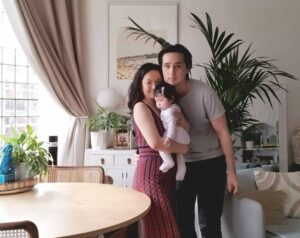


 View All
View All




 View All
View All









 View All
View All



